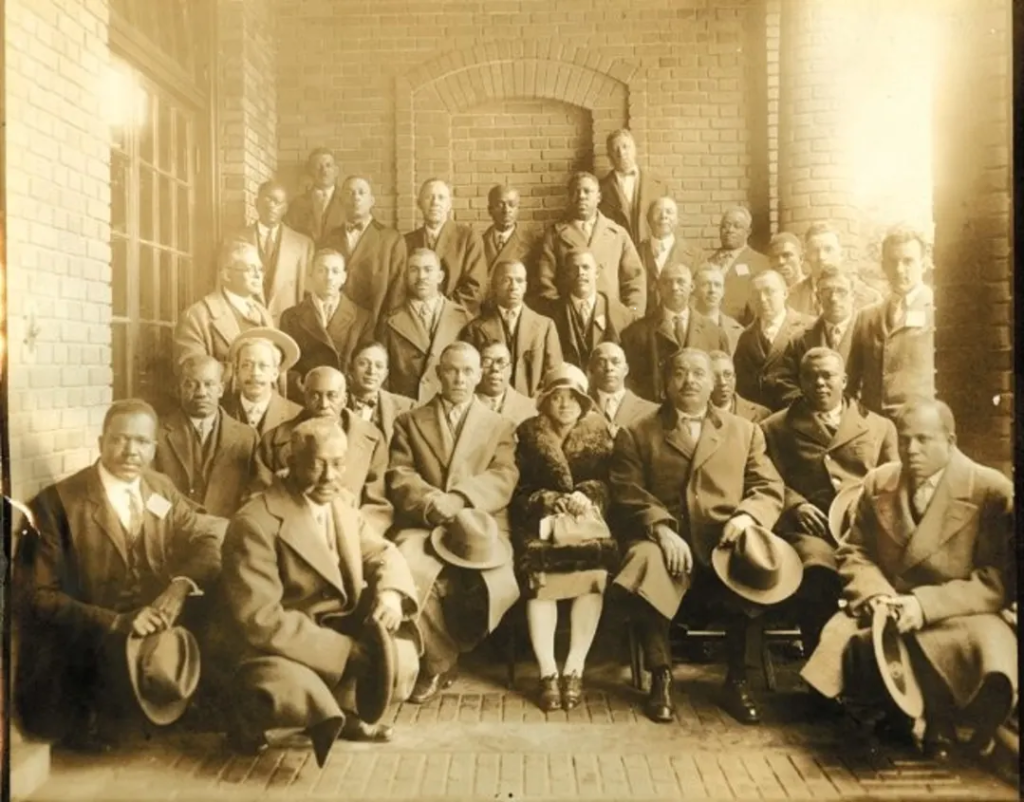The Library of Virginia holds the papers of Ethel Bailey Furman (1893-1976), Virginia’s first practicing African-American architect, and the collection comprises 177 pieces of physical evidence including more than 100 sheets of tracing paper bearing her hand drawings rendered in graphite. She is believed to have designed about 200 buildings including the Fair Oak Baptist Church in Richmond, St. James Baptist Church in Goochland County, and Mount Nebo Baptist Church in New Kent County. Notably, Furman’s 1961 International Style addition to Richmond’s Greek Revival Fourth Baptist Church sits on the National Register of Historic Places. She was a prolific designer, to be sure, and even if there’s very little left in the landscape of her effort, you may visit her home and studio at 3025 Q Street in Richmond, which her father — the city’s second licensed African-American contractor — built in 1910.
In 2020, I wrote about Furman for a series I developed for AIA National called “Pioneering Architects.” which chronicles underappreciated designers and architects, their legacies, and some of the challenges of parsing fact from near-fact. She was one of seven architects I wrote about for Pioneering Architects, all with their own unique historical challenges, even in this digital age of on-demand research. History, of course, is not a register of facts. More often, it represents currents and eddies of conjecture and myth that might seem (or might need to be) truthful to those who “write” history, but remains forever vulnerable to motivated revisionists. (Note the various ways high school texts have referred to, presented, and represented the American Civil War or the Civil Rights Movement over the years and you can start to see why that might be true, so to speak.) For this reason, there seemed to be an advantage to being an underappreciated architect, which is to remain unmythologized by truth-seekers looking to confirm a worldview, evince a thesis, or justify an outlook.

Today, fewer than one in five new architects are people of color, and just about two in five new architects are women. Going back in time, the numbers shrink while the effort required to uncover their stories necessarily grows. It’s a vital effort, though, if we are to cultivate a profession that is inclusive and diverse, and thereby create a design culture that perpetuates inclusion and diversity. Some efforts have been made to create a register of underappreciated architects, from the era of professionalization in the 19th century through what the economist Claudia Goldin called “the quiet revolution” of the late-20th century, when the labor force participation rate of women grew (as did their publicized contributions to the built environment). In 2004, the architect Julian Abele’s biographer Dreck Spurlock Wilson edited the most comprehensive volume of critical information, African-American Architects: A Biographical Dictionary, 1865-1945, published by Routledge/Taylor & Francis. Wilson, now retired, was an Associate Professor of Architectural History at Howard University and Lecturer in Landscape Architecture at Morgan State University, as well as a licensed landscape architect. Other, more recent efforts include Who Builds Your Architecture? and the Black Architects Archive. The AIA’s “Pioneering Architects” series relies on these sources, but it also relies on local historical societies, the archives of the National Park Service, the Library of Congress, the Library of Virginia (in the case of Furman), and others across the country. Private and corporate archives also contain important pieces of information worth seeking. I was able to confirm, for instance, some of the details of Eugene Choy’s work with Cathay Bank, for which he designed its iconic Chinatown branch in Los Angeles.
Yet, there are thousands of more stories waiting to be told within archives in Virginia and beyond about individuals who have contributed to our shared architectural heritage. As we work to achieve a future of greater equity, diversity, and inclusion in architecture, we can learn important lessons in reckoning with the past by mining our archives for evidence. Sometimes that evidence is mislabeled or not cross-referenced and sometimes it’s hidden in plain sight. But, it exists, and the act of research is ripe for this challenge: Can future histories be far richer than we’ve allowed past histories to be? I think so.
About the author
William Richards is a writer and editorial consultant, and from 2007 to 2011, he was the Editor-in-Chief of Inform Magazine. His latest book, Bamboo Contemporary: Green Houses Around the Globe, is published by Princeton Architectural Press.
